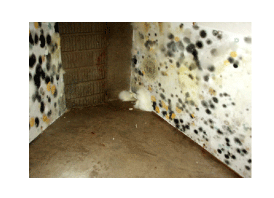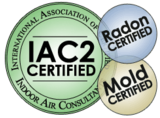 It’s been a typical rainy mud-season here in Park City and Heber City, Utah. As the snow melts, the rain comes, often for multiple days in a row offering little time for your home to fully dry out. If you have water damage, you need to get the area dry within 24-48 hours to prevent mold growth. Mold can be harmful to your health and something you’ll want to address sooner versus later.
It’s been a typical rainy mud-season here in Park City and Heber City, Utah. As the snow melts, the rain comes, often for multiple days in a row offering little time for your home to fully dry out. If you have water damage, you need to get the area dry within 24-48 hours to prevent mold growth. Mold can be harmful to your health and something you’ll want to address sooner versus later.
Mold Inspection vs. Home Inspection?
At HomeTech, we offer a non-invasive mold inspection of a structure for the presence of visible mold and or mold producing conditions. During a typical mold inspection, we will utilize: infrared cameras, humidity monitors, and moisture meters, to help determine the presence of these conditions.We also offer full home inspections, where we’ll check the entire house for radon and mold in addition to a complete interior and exterior inspection that will take 2-4 hours to complete.
The article below is courtesy of NACHI
The key to mold control is moisture control.
If mold is a problem in your home, you should clean up the mold promptly and fix the water problem.
It is important to dry water-damaged areas and items within 24 to 48 hours to prevent mold growth.
Why is mold growing in my home?
Molds are part of the natural environment. Outdoors, molds play a part in nature by breaking down dead organic matter, such as fallen leaves and dead trees. But indoors, mold growth should be avoided. Molds reproduce by means of tiny spores; the spores are invisible to the naked eye and float through outdoor and indoor air. Mold may begin growing indoors when mold spores land on surfaces that are wet. There are many types of mold, and none of them will grow without water or moisture.
Can mold cause health problems?
Molds are usually not a problem indoors, unless mold spores land on a wet or damp spot and begin growing. Molds have the potential to cause health problems. Molds produce allergens (substances that can cause allergic reactions), irritants and, in some cases, potentially toxic substances (mycotoxins). Inhaling or touching mold or mold spores may cause allergic reactions in sensitive individuals. Allergic responses include hay fever-type symptoms, such as sneezing, runny nose, red eyes, and skin rash (dermatitis). Allergic reactions to mold are common. They can be immediate or delayed. Molds can also cause asthma attacks in people with asthma who are allergic to mold. In addition, mold exposure can irritate the eyes, skin, nose, throat and lungs of both mold-allergic and non-allergic people. Symptoms other than the allergic and irritant types are not commonly reported as a result of inhaling mold. Research on mold and health effects is ongoing. This article provides a brief overview; it does not describe all potential health effects related to mold exposure. For more detailed information, consult a health professional. You may also wish to consult your state or local health department.
How do I get rid of mold?
It is impossible to get rid of all mold and mold spores indoors. Some mold spores will be found floating through the air and in house dust. Mold spores will not grow if moisture is not present. Indoor mold growth can and should be prevented or controlled by controlling moisture indoors. If there is mold growth in your home, you must clean up the mold and fix the water problem. If you clean up the mold but don’t fix the water problem, then, most likely, the mold problem will recur.

